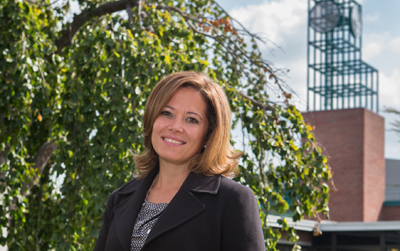
Exploring the value of ‘Energy Star’ homes
The numbers in neat columns tell — column by column, page by page — a story spread out across Carmen Carrión-Flores’ desk at Binghamton University. It’s a great story, she says; she just doesn’t know how it ends. Yet.
This is what she sees: People pay extra for an Energy Star home, expecting its greater energy efficiency will save money. They apparently plan to recoup the extra cost of purchase by passing it along to the next owner. Except they don’t, Carrión-Flores says. “People who pay a premium expect increased value,” the environmental economist says. “Developers are selling houses at a premium, but when I analyze the repeat sale, the owners are not selling at a premium.”
Carrión-Flores looked at sales of homes in Gainesville, Fla., from 1997 to 2009. She corrected for differing neighborhoods, arm’s-length transactions, house layout and the collapse of the housing market in 2008. The numbers tell a very real story: Within five years, owners no longer recoup the extra cost to buy Energy Star’s efficiencies. Carrión-Flores has several hypotheses:
The federal Energy Star program didn’t keep up with local building codes. In the first years of the study, Energy Star homes were 20 percent more energy efficient than houses built simply to code. But by the last years, local code had become more stringent, and Energy Star homes were only 13 percent more efficient. That makes the Energy Star home’s value difficult to compare.
Owners don’t know how to market their Energy Star homes. It’s not as simple as laying out a year’s worth of utility bills because of variations in individual energy use — such as how warm or cool one keeps a house or how much laundry one does or how long the lights are left on.
The original owners are satisfied with the lower utility costs and don’t feel the need to recoup the investment through a higher sale price.
Carrión-Flores notes that Gainesville is just one market. Others have different building codes, housing stock and energy needs. Energy in Gainesville is primarily electricity to power air conditioners while other markets need natural gas or oil to provide heat. Some markets have older housing or static codes, or both. “The story is more complex than we think,” says Paul Hirsch, an environmental studies
professor at the SUNY College of Environmental Science and Forestry who focuses on environmental policy and sustainable development. “None of these things have one variable.”







